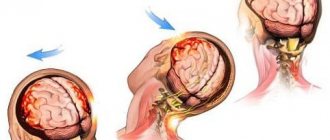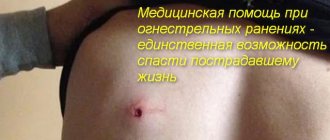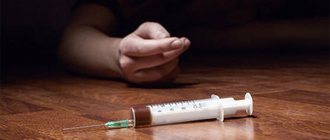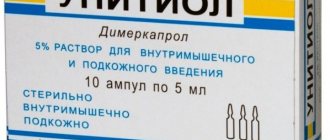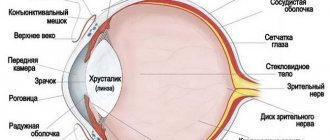Category: ENT + pulmonology, Symptoms and conditions
There is probably no person in the world to whom such a nuisance as a nosebleed has not happened. Of course, if it happened after a short-term friendly boxing match, then the reason is obvious.
But what if nasal hemorrhages happen regularly, and for no apparent reason? Of course, as soon as the nosebleed is stopped, most people tend to immediately forget about this unpleasant episode.
What should you do if episodes of nasal hemorrhage (as medical science calls this incident) occur frequently, and your nose bleeds every day? What dangers could this pose?
Why does nosebleed occur?
The blood supply to the nasal cavity and paranasal sinuses is complex. The arteries of different vascular units, intertwining with each other, are divided into capillaries and form a thin network. In some cases, the integrity of the nasal vessels is compromised and bleeding occurs.
The causes of nosebleeds are divided into local and general. Local are directly related to direct damage to the vessels of the nasal cavity. Common causes of nosebleeds are associated with various medical conditions.
Local causes of nosebleeds:
- Trauma to the nasal cavity (impact, foreign body, nasal surgery, rhinoscopy)
- Inflammation of the paranasal sinuses, resulting in blood vessels overflowing
- Malignant neoplasms of the nasal cavity
Common causes of nosebleeds:
- Arterial hypertension
- Vegetative-vascular dystonia
- Decreased blood clotting
- Vitamin deficiency
- Barotrauma
- Hormonal imbalance
- Emotional overload and stress
- Sunstroke
- Taking certain groups of medications (hormones, antihistamines, heparin,
Nosebleeds rarely recur in a healthy person. As a rule, this condition occurs after severe emotional shock or stress. Nosebleeds in some disease develop when the mechanisms of its regulation are disrupted. If nosebleeds occur frequently and are accompanied by bleeding from other organs, you should consult a doctor.
Causes
There are two groups of factors that can cause nosebleeds. These are local and systemic. Surgery, nasal injuries, damage from foreign bodies, the presence of inflammatory processes and tumors in the nasal cavity or paranasal sinuses, low air humidity and others are local causes.
Systemic ones are less common, but most often require a visit to a doctor. These may be allergies, the development of infectious diseases, high blood pressure, heart and blood diseases, alcohol abuse, and side effects of medications.
The causes of epistaxis in adults are most often associated with various diseases. The anatomical structure of the nasal cavity may be one of the reasons for regular bleeding. When a person coughs, sneezes or has a runny nose, feeling normally, detects droplets of blood, this indicates the presence of weak vessels in the Kisselbach plexus (the anterior part of the septum).
It will also be useful for you to learn about the signs of venous bleeding on our website.
In case of systemic bleeding, it is recommended to see a doctor
It most often manifests itself in childhood. The presence of atrophic rhinitis may be another factor in which the nasal mucosa dries out and becomes thinner. Even a light touch to it can destroy the integrity of blood vessels.
Frequent bleeding can also cause hormonal changes. For example, during puberty or during pregnancy. During this period, the level of sex hormones increases greatly, which increases blood supply in the mucous membrane area. And if the vessels have increased fragility, then nosebleeds occur.
We also recommend studying this topic:
How to provide first aid for capillary bleeding?
Clinical picture of nosebleeds
All signs of this condition are divided into three groups:
- Direct signs
- Symptoms of the primary disease
- Symptoms of blood loss
Every detail of the clinical picture plays a big role for the doctor. Studying the symptoms of bleeding allows you to identify the cause and prevent relapses.
A direct sign is the outward flow of blood from the nasal cavity visible to the eye or the flow of blood from the nasopharynx into the oropharynx. Nosebleeds can be detected by pharyngoscopy.
The primary disease is the one that caused the nosebleed. Symptoms of the disease appear before bleeding begins.
Symptoms of blood loss depend on its degree, which is calculated according to certain indicators (blood volume, age and gender of the patient, location of bleeding, general condition of the body).
Depending on the frequency of manifestations, nosebleeds are divided into:
- One-time (takes up most of all cases)
- Recurrent (repeats periodically and requires observation by an ENT doctor)
- Habitual (repeated several times a year and continue for a long time)
Anatomically, nosebleeds are divided into anterior and posterior.
Principles of care for nosebleeds
Any emergency care consists of a certain sequence of events. First aid is provided by the simplest people who do not have medical education. If there is no effect, call an ambulance or take yourself to the hospital. Every person should know and be able to provide assistance in emergency situations.
Sequence of pre-medical actions for nosebleeds
- Sit the patient down and tilt his head slightly forward. Many people mistakenly tilt their head back, which causes blood to flow into the throat and vomit.
- If there are no signs of a fracture of the nasal bones, then the bleeding can be stopped by digital compression. To do this, you need to press the wings of the nose to the nasal septum. To stop the bleeding faster, the victim breathes through his mouth and does not blow his nose.
- If the victim has signs of a bone fracture (swelling, pain, hematoma, change in the shape of the nose), ice should be applied.
These are the most accessible activities that anyone can do. If the bleeding does not stop after 10 minutes, then an ambulance should be called.
Doctor's actions in case of nosebleeds
How to help a child with a nosebleed?
- The most important thing to do is to calm the child down.
- Tilt the child's head slightly forward and press the wings of the nose against the septum with your finger for 10 minutes. The child should not blow his nose or breathe through his mouth for several hours.
- If the bleeding has stopped, you should carefully lubricate the nasal cavities with Vaseline.
If bleeding occurs repeatedly, consult a doctor immediately.
Nosebleeds in medical terminology are called epistaxis. This condition is characterized by bloody discharge from the nasal passages, which may be less or more abundant depending on the underlying cause.
In some cases, the pathology is accompanied by dangerous signs and can lead to serious consequences. Therefore, it is important to know what first aid should be for nosebleeds. Correct actions in this condition can not only stop nosebleeds, but also save a person’s life.
There are many reasons why nosebleeds occur. This pathological condition can develop due to the following factors:
- Injury to the nasal mucosa in the septum area.
- Surgical intervention on the nose.
- Deviation of the nasal septum.
- The presence of an oxygen catheter in the nose.
- Entry of foreign objects into the nasal cavity.
- Barotrauma due to air travel or deep immersion in water.
- Reduced air humidity.
- Intoxication of the body.
- Vitamin K deficiency.
- Lack of ascorbic acid in the body.
- Deformation of the nasal cavity.
- Excessive drinking.
- Changes in hormonal levels.
- Sunstroke.
- Use of narcotic substances.
- Stressful situations.
- Physical overexertion.
- Fragility of blood vessels in the nose.
- Use of certain medications.
The following nasal diseases also provoke the development of epistaxis:
- Sinusitis.
- Rhinitis is atrophic.
- Allergic runny nose.
- Nasal polyps.
- Malignant or benign formation in the nasal cavity.
You can learn more about the causes of nosebleeds from the video:
In addition, nosebleeds can occur as a symptom of the following diseases:
- Hyrotheriosis.
- Hemoblastosis.
- Hemophilia.
- Leukemia.
- Liver failure.
- Cirrhosis and hepatitis.
- Kidney pathologies.
- Pulmonary diseases.
- Sometimes nosebleeds occur due to various infections (influenza, ARVI, diphtheria).
Diseases that are associated with impaired platelet function and abnormal blood clotting are also common causes of nosebleeds. The risk group includes children and the elderly.
Nosebleeds first aid ways to stop
1. First aid for severe nosebleeds
: • You should remain calm. • The patient must be seated, tilted slightly forward and asked to open his mouth so that he does not swallow the blood, but spits it out. • Cold is applied to the back of the head and back of the neck and to the bridge of the nose. • The wings of the nose are pressed against the septum for several minutes.
Methods to stop nosebleeds
:
I. Symptomatic treatment
: - Psychological support (if necessary, sedatives are administered) - The patient is seated - An ice pack is applied to the back of the head - If blood pressure is high, antihypertensive drugs are administered - Saline and colloid solutions are administered intravenously - If the hematocrit is below 50%, blood is transfused - A coagulogram is examined and, if the patient is taking anticoagulants, determine their concentration in the blood plasma
II. Local treatment of nosebleeds
:
a) Impact on the source of bleeding
: - Local application of hemostatic drugs, such as thrombin, as well as tampons impregnated with gelatin, oxycellulose or fibrin - Injection into the bleeding area of a vasoconstrictor drug - For a point source of bleeding - cauterization with a heat cautery, electrocoagulator or laser - Currently, the operation of choice is endoscopic ligation or coagulation sphenopalatine and anterior and posterior ethmoidal arteries - Anterior tamponade with a gauze swab or inflatable balloon - Posterior tamponade with a gauze swab or inflatable balloon - Selective embolization of the bleeding artery when performing traditional or digital subtraction angiography; alternatively, artery ligation is performed
b) Depending on the source of bleeding
and in cases where the bleeding cannot be stopped by other methods, they resort to ligation of one of the following arteries: - internal maxillary artery - anterior and posterior ethmoid arteries - external carotid artery
III. Replacement therapy for bleeding
: - Fresh blood is transfused, for systemic thrombopathy, vitamin C and hemostatic drugs are administered - Fresh blood plasma is transfused, procoagulants are administered in the form of the Cohn fraction, for coagulopathy, if necessary, vitamin K or ACTH is administered, for vasculopathy - glucocorticoids, calcium, vitamin C and estrogens - In case of Rendu-Osler-Weber disease, they resort to photocoagulation with an argon laser or a neodymium yttrium aluminum garnet laser - Dermoplasty of the nasal septum according to Sonder - Another effective remedy used for repeated bleeding is the operation of closing the nasal passages according to Young
Blood supply to the nasal cavity
: 1 - Kisselbach plexus; 2 - internal maxillary artery; 3 - sphenopalatine artery; 4 - ophthalmic artery; 5 - anterior and posterior ethmoidal arteries. I-IV: arterial basins of the nasal cavity.
2. Local surgical interventions for nosebleeds
:
a) Coagulation and chemical cauterization of the Kisselbach plexus
. To stop bleeding from the Kisselbach plexus, you can use one of the following methods. In everyday practice, doctors often prefer to coagulate a bleeding vessel with bipolar electrocoagulation after preliminary superficial anesthesia of the mucous membrane.
The traditional method of chemical cauterization with silver nitrate or chromic acid has also become widespread; This method is still an acceptable alternative to electrocoagulation today.
Another method of stopping recurrent bleeding is laser cauterization. However, this method is not applicable for acute nosebleeds. The mechanism of action of lasers depends on the wavelength of the light they emit.
Thus, the radiation of an argon laser and a neodymium yttrium aluminum garnet (Nd:YAG) laser is selectively absorbed by hemoglobin, causing a photothermolytic effect (the so-called optical purse-string suture), which allows the use of these lasers for recurrent bleeding from the skin or mucous membranes, for example, in Randu Osler disease Weber.
Other lasers, in particular carbon dioxide and diode, cause coagulation.
b) Anterior nasal tamponade during bleeding
. Technique: First of all, local anesthesia of the nasal mucosa is performed. A strip of gauze 2-4 cm wide, soaked in ointment, is inserted into the nasal cavity, laid in layers in the direction from top to bottom or from back to front. The tamponade should be tight enough to compress the source of bleeding. As an alternative, pneumatic balloon tamponade can be performed.
If anterior nasal tamponade in case of profuse nosebleeds turns out to be ineffective, for example, in case of a nasal injury or rupture of a vessel in arterial hypertension, as well as in case of a hidden source of bleeding or its location in the posterior part of the nasal cavity, one of the following methods can be used to achieve hemostasis.
To stop nosebleeds, they resort to tamponade of the nasal cavity using a gauze swab soaked in panthenol ointment or moistened with a solution of tetracaine with epinephrine or thrombin. In the UK, tampons impregnated with bismuth-iodoform-paraffin are widely used. As an alternative remedy, you can use tampons, which are a fingertip filled with polyvinyl alcohol, compressed into a polymer foam (Merocel).
Absorbent tampons containing oxycellulose (Oxycel), cellulose or synthetic materials, such as hydrocolloid (Rapid Rhino), which expand when wetted, are also used. Other options include a gelatin sponge, hyaluronic acid pads, or hemostatic agents such as thrombin.
Fibrin glue is also used. In the inflatable balloons developed by Meising for tamponade of the nasal cavity and nasopharynx, the pressure is easily dosed. Devices that work in a similar way include epistaxis catheters (such as the Epi-Max catheter), choanal balloon catheters, balloon catheters for epistaxis, and a Foley catheter.
a Tamponade of the nasal cavity: 1 - anterior nasal tamponade by placing a tampon in the form of vertical knees; 2 - nasal cavity after completion of the insertion of the tampon (Belloc tamponade). b Two inflatable balloons for tamponade of the nasal cavity and nasopharynx.
c) Posterior nasal tamponade with bleeding
. Posterior nasal packing is a very painful procedure and is therefore performed under general anesthesia with tracheal intubation or at least thorough local anesthesia.
Principle
. A gauze swab with a thread tied to it is used to cover the choana, fixing it in it and thereby preventing the flow of blood from the nasal cavity into the nasopharynx. After this, anterior tamponade is performed. Initially, the posterior tamponade technique described by Belloc was burdensome for the patient and required certain skills from the surgeon, as well as effective anesthesia. It is easier and more effective to isolate the back of the nasal cavity from the nasopharynx if you use a catheter with an inflatable cuff at the end.
Methodology
. Under general anesthesia or, if necessary, local anesthesia, a catheter with an inflatable cuff is passed into the nasopharynx through the half of the nose in which bleeding has occurred. The cuff is inflated with water until it blocks the entrance to the nasopharynx and prevents blood from flowing into it from the nasal cavity, after which the anterior part of the nasal cavity is tamponed and the catheter protruding from it is fixed.
Similar catheters
with an inflatable cuff at the end should always be in hospitals and all practicing otolaryngologists.
If there is a severe curvature of the nasal septum or the presence of a bone spur, surgical correction may be necessary.
Complications
. Despite the effectiveness of tamponade using a catheter with an inflatable cuff, the latter, if there is excessive pressure on the mucous membrane, can cause necrosis, ulceration, infection and ultimately the formation of scars and adhesions.
Catheter
, left in the nasal cavity, or threads tied to a tampon blocking the entrance to the nasopharynx, should not put much pressure on the wings of the nose and columella, as this can lead to the rapid development of necrosis, which will heal in the area of the apex of the nose and in the anterior part of the cavity scars form on the nose. A postnasal drip should not remain in the nasopharynx for more than required, and never for more than 5-7 days. Before removing the tampon, prophylactic antibiotics are prescribed, taking into account the increased risk of developing sinusitis or otitis media due to obstructed outflow, since the tampon, when positioned correctly, blocks the pharyngeal opening of the auditory tube.
PS
All nasal packings should be securely secured to prevent aspiration. Particular caution is required when using ointments due to the possibility of the formation of disfiguring lipogranulomas (even several years after tamponade), which require surgical removal.
Points at which large arteries can be ligated to stop profuse nosebleeds: a General view. 1 - internal maxillary artery; 2 — ligation of the external carotid artery; 3 - external carotid artery; 4 - internal carotid artery; 5 - common carotid artery. b Ligation or embolization of the ethmoidal arteries. c Ligation or embolization of the internal maxillary or sphenopalatine artery in the pterygopalatine fossa, d Embolization using a coil.
d) Endoscopic identification of the source of bleeding and implementation of hemostasis
. Endoscopic intervention is performed under local or general anesthesia with, if necessary, correction of the nasal septum and resection of the cells of the ethmoid labyrinth.
Under endoscopic control, the ethmoidal and sphenopalatine arteries can be cauterized using a bipolar electrocoagulator.
— Artery embolization
. For recurrent nosebleeds that do not respond to conservative treatment, interventional embolization is performed under X-ray control. The most modern method is selective embolization of a bleeding artery when performing digital subtraction angiography. Selective embolization can be performed without complex equipment during conventional angiography. Embolize, for example, the maxillary and facial arteries.
— Ligation of a bleeding vessel
. Ligation of a bleeding vessel is resorted to in case of life-threatening bleeding, if it cannot be stopped by the methods and means mentioned above. Depending on the source of bleeding, the internal maxillary artery in the pterygopalatine fossa, the anterior and posterior ethmoidal arteries, or the external carotid artery at the anterior edge of the sternocleidomastoid muscle above the level of the origin of the lingual artery are ligated.
However, it should be noted that these methods of stopping nosebleeds were developed at a time when endoscopy as a method of identifying the source of bleeding and stopping it had not yet been developed.
e) Bleeding in hereditary telangiectasia
(
Rendu-Osler-Weber disease
). Homozygous carriers of the gene for this disease suffer from repeated bleeding even in childhood, partly as a result of hemorrhage. Patients with this pathology should avoid injuring the mucous membrane, lubricate it with ointments or vegetable oil, moisten it with isotonic solutions, or insert tampons soaked in an antibiotic solution into the nasal cavity.
A modern method of symptomatic treatment of hereditary telangiectasia is known as the “optical purse-string suture”. It consists of exposing a given area of the affected skin or mucous membrane to an argon or Nd:YAG laser beam until a soft whitish spot appears (i.e., without coagulating the skin or mucous membrane).
Initially, there is a pronounced tissue reaction and the resumption of minor bleeding, but as the scar forms and the vessels become obliterated, the risk of bleeding and its intensity decrease.
In Saunders dermoplasty, the mucous membrane of the anterior part of the nasal septum is removed and a split skin flap cut from distant areas of the body is transplanted in its place.
Complete closure of the nasal cavity using flaps mobilized in the area of the internal nasal valves (Young's operation) is successfully performed in patients with severe frequent bleeding for whom the methods of stopping bleeding described above did not help.
a — telangiectasia of the lips b — telangiectasia of the tongue c — endoscopic picture of telangiectasia in a patient with Randu-Weber-Osler disease.
Distal part of the duodenum. Multiple lesions of more distant parts of the small intestine are visible source
How to provide first aid correctly?
It is important for every person to know how to properly provide first aid for bleeding from the nasal cavity, so as not to harm and stop the bleeding.
- Calm a person who is bleeding. For this purpose, it is advised to improve your breathing: take deep and slow inhalations and exhalations. The patient's anxiety only serves to increase the flow of blood from the nose.
- The person should take a comfortable position. The head should be raised, but not thrown back. Breathing should be through the mouth.
- Press your fingers against the nasal septum of the nostrils for a few minutes until the bleeding stops.
- Provide the victim with fresh air.
- Carefully clear the nasal cavity from accumulated blood clots, after which it is recommended to instill the passages with vasoconstrictor nasal drops. These include Nazivin, Tizin, Galazolin, Sanorin. A few drops of medication are dripped into each passage.
- After using vasoconstrictors for the nose, drop hydrogen peroxide into each nostril.
- Apply an ice pack to your nose. It is changed every ten minutes to keep it cold. Another way to stop bleeding is to immerse the lower extremities in warm water and the hands in cold water. If this is not possible, then you can apply any cold object to the nose area.
- Insert a cotton swab into the nasal passage. It can be moistened with aminocaproic acid or peroxide. It needs to be removed after some time. Before this, it is recommended to moisten the tampon with water using a pipette.
If the cause of nosebleeds is overheating or sunstroke, then the patient must be seated in a place where direct sunlight does not reach.
It is also recommended that the victim drink some salt water. To prepare the solution, take a glass of water and a teaspoon of salt. It is important to determine whether blood is entering the nasopharynx. To do this, the patient should spit. If the saliva is red, the bleeding continues.
What actions are prohibited during nosebleeds?
In case of nosebleeds, the following actions are strictly prohibited:
- Throw your head back. In this situation, blood discharge begins to flow down the nasopharynx, resulting in vomiting. Sometimes blood clots penetrate the respiratory tract this way. Due to pinching of the veins due to throwing back the head, the pressure also begins to increase.
- Horizontal position for nosebleeds.
- Blow your nose. In such a situation, the formed blood clot is damaged, so the blood continues to flow.
- If you have a nosebleed, you should not cough, eat, swallow, talk, or spit.
- If there is a foreign object in the nose, you are not allowed to remove it yourself. This can only be done by a medical professional. Otherwise, the foreign body may move to the lower respiratory organs and cause suffocation.
Such actions only increase nosebleeds and can lead to dangerous complications.
Dangerous symptoms that require a doctor?
In some cases, symptoms may be observed that indicate the development of dangerous pathological conditions.
These signs include:
- Vomiting (bloody) and nausea.
- Noise in ears.
- Strong feeling of thirst.
- Paleness of the skin.
- Convulsive state.
- Cloudiness and loss of consciousness.
- Rapid pulse.
- Frequent bleeding from the nasal cavity.
The presence of blood with foam may indicate diseases of the lower respiratory system. If the blood is yellowish-pale in color, medical attention is needed, as this sign often indicates skull fractures. Consultation with a specialist is required if there are head or facial injuries.
You should also call an ambulance if bleeding occurs due to a fall or head injury.
If such symptoms are observed, you must call an ambulance. In case of prolonged nosebleeds (more than twenty minutes) or its profuseness, you will also need to call an emergency room. A doctor should examine a patient with nosebleeds if he has diabetes, hypertension, or diseases associated with bleeding disorders.
Complications of nosebleeds
Nosebleeds can sometimes result in severe blood loss due to the large number of blood vessels in the nose. In some situations it threatens human life.
Among the severe consequences of nosebleeds, the most common are the following:
- Hypotension.
- Acute heart failure.
- State of shock.
To prevent these consequences from occurring, it is important to properly provide emergency care when bleeding from the nose appears and call an ambulance if there are dangerous signs.
Thus, providing first aid for nosebleeds is quite simple. The main thing in such a situation is to stop panicking. However, when the blood flows for a long time, is watery, mixed with yellow liquid, then you must immediately call a doctor.
Green cabbage soup is one of the most favorite spring dishes. Young shoots of stinging nettle, appearing in early spring in the forest, garden or summer cottage, are excellent plant raw materials for preparing vitamin-rich dishes: salads, soups or cabbage soup. Nettle contains vitamins and antioxidants, which are so necessary for our body after winter, fiber, carotenoids, organic acids and essential amino acids, and […]
Garlic arrows are not only a tasty seasoning, but also a healthy product with many healing properties. The phytoncides they contain are natural antiseptics, which means that with regular use of this product, a person maintains youth, a sharp mind and good health. Read in this article:1 How garlic arrows are used in cooking1.1 What are the benefits of garlic arrows and who are contraindicated for them1.2 Pickling […]
What foods are rich in proteins? This question is relevant when we are looking for original Lenten recipes. Today, many people follow the traditions of Lent, which involves some restrictions on food. At this time, you should not consume products of animal origin, which may result in a loss of strength and a weakening of general tone. But protein can be replaced with other products that [...]
In order to successfully perform all its functions (warm, moisturize and purify the air, recognize odors), the human nose is equipped with a good blood supply, which is realized by a network of the smallest vessels - capillaries.
General factors, most common causes
- Jumps in blood pressure in patients with hypertension.
- Diseases of the blood.
- Overwork, stress and lack of sleep.
- Recent infectious diseases (influenza and ARVI).
- Excessive dry air in the room.
- Certain diseases of the liver and spleen.
- Allergic conditions.
- Vitamin C deficiency.
- Heatstroke or overheating.
- Reduced ability of blood to thicken.
- The phase of hormonal changes during adolescence, as well as in women in the first trimester of pregnancy.
Regardless of the cause, first aid is provided for nosebleeds. The concept of “bleeding” is considered to be the penetration of blood outside the vessel. If the blood pours out, the bleeding is called external, but if it seeps through the tissues and pours into the cavities of the patient’s body, it is called internal. The most serious health issue due to the problem of definition is, of course, internal bleeding, but external bleeding can also pose a health threat.
The flow of blood outside the vessels occurs:
- when a vessel wall breaks due to illness or injury;
- when blood leaks through entire vessels, which happens with increased permeability of the walls or with pathology of the blood composition.
Causes of nasal bleeding
The condition when blood leaks through the wall of a vessel is called diapedesis. Occurs with various pathologies and changes in blood composition. Destruction, rupture of the vascular wall or arrosion occurs during injury or hypertensive crisis.
Most bleeding occurs due to mechanical injuries: scratching the mucous membrane with nails, sharp blowing of the nose, fractures of the nose, its septum, or a foreign object entering the cavity.
Also a common cause is changes in blood pressure. Low or very high leads to blood vessels bursting and bleeding.
In inflammatory diseases (rhinitis, sinusitis, sinusitis), crusts form in the nose, they injure the mucous membrane, causing minor bleeding.
Hormonal imbalances caused by changes in the menstrual cycle or more serious reasons - diseases of the adrenal glands, thyroid or pancreas can also cause quite serious blood loss. In a pregnant woman, the nasal mucosa becomes thinner, becomes more fragile, pressure surges are possible and, as a result, nosebleeds.
Changes in the composition of the blood, for example, a decrease in the number of platelets in it, lead to sweating through the vessel wall. In this case, bleeding is frequent and it can be difficult to stop. This condition is also called incoagulability; the cause can be quite serious pathologies.
A decrease in the body's protective functions, weakening and thinning of the walls of blood vessels also cause nervous disorders caused by constant stressful situations, overexertion, and depression.
The cause of bleeding can be sunstroke or overheating due to prolonged exposure to the sun, which leads to drying of the nasal mucosa and fragility of blood vessels.
Taking certain medications and drinking alcohol can lead to bleeding.
What to do to stop bleeding?
When providing emergency first aid for a nosebleed, you must first calm the victim, because anxiety and fear only worsen the bleeding. If an accident occurs in a room, the windows should be opened to give the victim maximum flow of clean air. Immediately you need to unfasten the collar or top button and relieve the victim of compressive elements of clothing. Monitor the patient’s breathing: he should inhale air through his nose and exhale through his mouth. This breathing method will help the blood clot quickly.
For first aid for nosebleeds, the algorithm of actions is as follows:
- First you need to find out which nostril the blood is flowing from.
- Roll up a small swab, moisten it with water and insert it into the nostril that is bleeding. The tampon is inserted so that blood does not flow out of the nose, but it should not cause pain.
- Place a cold object on the back of your head.
- Pinch your nose with two fingers, pressing lightly on the wings.
- Keep your nose in this position for about two minutes.
- If necessary, change the tampon with a new one.
Nosebleeds in pregnant women
Occurs due to the following reasons:
- Hormonal changes.
- Lack of calcium in the body.
- Arterial hypertension.
If a pregnant woman experiences this condition, there is no need to panic; it is better to carry out first aid measures for nosebleeds. Firstly, it is worth determining the volume of lost blood, and secondly, understanding what preceded this. This phenomenon during pregnancy does not always indicate a painful process; most likely, it indicates an increased load and increased blood flow throughout the female body. After stopping the bleeding, it is advisable to carefully rinse the nasal passages with running water so that clots do not complicate the breathing process. Dry nasal mucosa should be lubricated with drops of vegetable oil soaked into a cotton swab. You need to smear the nasal passages very carefully, since the slightest damage to the nasal mucosa can provoke secondary bleeding.
Other first aid methods for nosebleeds
- Soak a cotton swab in hydrogen peroxide (or Vaseline ointment, fresh nettle juice, vinegar) and place it in the nostril.
- For greater effect, the nostril can be pressed against the nasal septum and held for several minutes. Remove the tampon. If the bleeding has not stopped yet, repeat the procedure.
- Place a few drops of lemon juice diluted with water into your nose.
If a person with a nosebleed has lost consciousness, he is immediately taken to the hospital while lying on his back with his head turned to the side. Providing first aid for nosebleeds in this case consists of quickly delivering the victim to a medical facility. In this case, place a bag of ice or a napkin soaked in cold water on the bridge of the nose.
Medical treatment and careful examination are necessary in situations where nosebleeds occur too frequently. If the patient complains of dizziness, you need to give him a sniff of ammonia. Once the bleeding has stopped, the condition of the victim and the amount of blood that has leaked should be assessed. If the loss is significant, then in the hospital he is given a transfusion of blood products, and in case of slight blood loss, he should be given cooled sweetened tea and sent to fresh air.
Medical first aid
Hemostasis for nosebleeds of traumatic origin, as well as for hemorrhages caused by infectious diseases, is carried out by instilling into the nose a 0.1% solution of adrenaline, diluted 1 to 10 in saline solution.
In addition, the external nasal passage can be tightly packed with a sterile gauze pad soaked in a solution of adrenaline or hydrogen peroxide. Instead of a napkin, a hemostatic sponge can be used. General treatment consists of administering enterally (through the gastrointestinal tract) or parenterally (bypassing the digestive tract) hemostatic drugs, such as vikasol (1.0 IM), etamsylate (2.0 ml IV diluted with saline), aminocaproic acid (100.0 IV drip). In addition, the patient is prescribed ascorbic acid, calcium chloride or calcium gluconate in tablet or injection form (parenterally, strictly intravenously at dilution).
If there is no effect from the treatment and bleeding continues, the patient must be hospitalized in the department of maxillofacial surgery for examination and further treatment.
First aid for nosebleeds in children
This phenomenon occurs quite often in children. It can be triggered by a fall, a blow, picking the nose, or observed with a runny nose. Sometimes it occurs for no apparent reason. In babies under 1 year of age, nosebleeds are rarely observed due to the structure of the nasal mucosa; the situation changes when the baby begins to actively walk and run.
The first step is to calmly assess the situation. If there is severe bleeding due to a head injury, you should call a doctor. Before his arrival, you should position the baby in a half-sitting position (possibly over a basin or washbasin) and squeeze his nostrils tightly for a few minutes. It is important to ensure that the child does not swallow the blood, but spits it out.
If bleeding continues, apply a cold, wet compress or crushed ice wrapped in a cloth to the bridge of the child's nose. Then close the nostrils of your nose again. If all methods do not help, you need to insert a cotton pad into the nose corresponding to the size of the nasal passages, moistened with a 2% solution of hydrogen peroxide, and lightly press both halves of the nose. With mild bleeding, these measures can be carried out without the help of medical professionals. If, after independently performing the first aid algorithm for nosebleeds, it is not possible to stop it, you should definitely call a doctor.
You cannot tilt your head back in order to stop the bleeding, as this will cause it to go into the throat, the child will swallow it, and the parents will think that the process has stopped. In addition, in this position, squeezing the blood vessels of the brain can increase bleeding. After the bleeding has stopped, the child should not blow his nose for 4 hours.
For those who fear the sight of blood, a nosebleed is a disaster. But, of course, there is no need to panic just because a vessel in the nose is damaged. Parents often get scared when their child’s nose bleeds for no reason during a cold. In a baby, the blood vessels are much more susceptible to the effects of microbial toxins than in an adult, and this leads to increased bleeding of the mucous membrane during infection. But sometimes nosebleeds can be a symptom of a serious disease of the blood vessels, blood, lungs or heart. Therefore, if your baby’s nosebleeds are a frequent occurrence, you should definitely consult a doctor.
When can a nosebleed become dangerous for a person?
The most dangerous is the discharge of blood that is strong or lasts for a long time. In this case, the person experiences acute blood loss. Dizziness, cold sweat, flickering before the eyes, pallor of the skin and mucous membranes occur. The pulse is weak and frequent, and loss of consciousness is likely. The first aid algorithm for nosebleeds should be applied from the first seconds. This phenomenon requires immediate medical assistance, but even with less severe blood loss, one cannot remain inactive - everything must be done to stop the bleeding as quickly as possible.
What not to do?
- You cannot lie down and raise your legs at the same time. In this position, the flow of blood to the head increases, which will only increase bleeding.
- You can't tilt your head back. Lifting the chin can force blood into the throat, which can cause bloody vomiting, or blood can enter the airways and cause pneumonia.
- After blood loss has stopped, you should not drink strong tea or coffee or eat hot food in the near future. They raise blood pressure, which can cause relapse.
- If bleeding has occurred, you should not take cold inhalations that day, as the blood vessels should get stronger.
Severity of nosebleeds
Bleeding severity:
- Mild degree is characterized by blood loss of up to 500 ml.
- The average degree is determined by blood loss from 500 to 1,400 ml.
- Severe degree – from 1,400 ml.
You can determine the severity yourself not only by the volume of blood lost, but also by the accompanying symptoms.
With a mild degree, a person feels weakness of the body, disorientation, blurred vision, his skin turns pale, and his pulse quickens to 100 beats per minute.
Moderate severity is characterized by shortness of breath and a drop in blood pressure. The victim's skin feels cold and damp to the touch.
In severe cases, the heart rate decreases sharply. In this case, you need to quickly seek medical help.
Prevention
It is necessary to strengthen blood vessels using the following procedures:
- Rinse the sinuses with saline solution (2 teaspoons of sea or ordinary salt per 200 ml of water).
- Crusts in the nostrils must be softened with Vaseline oil and removed only after they have softened.
- It is recommended to use Ascorutin or medications that strengthen the walls of blood vessels.
- B vitamins must always be present in the diet (high amounts of them in citrus fruits, currants, rose hips).
- For preventive purposes, doctors recommend supplementing the menu with vitamin juice or green tea, as they boost immunity well.
- Hardening procedures are a long-tried method of strengthening blood vessels; a contrast shower has an excellent effect on them.
When to see a doctor?
If blood flows from the nose in a strong stream or for more than a quarter of an hour, and no first aid method for nosebleeds helps, you should urgently call a doctor! It is also worth visiting the hospital if nosebleeds occur frequently and without a specific reason. The issue may be poor blood clotting or the presence of other diseases of the body.
Every person is familiar with slight bloody discharge from the nose. Their appearance is most often associated with minor trauma. In such cases, first aid for nosebleeds consists of performing simple sequential actions.
However, sometimes the bleeding is very intense, it is impossible to stop it using conventional methods, and clots are clearly visible in it. These require emergency medical care, as they are associated with diseases of internal organs and are fraught with serious consequences, including death.
What are the causes of sudden or periodic discharge of blood from the nose, what to do to stop it, and also in what cases emergency medical help is needed, we will tell you in this article.
How to prevent nosebleeds
Prevention of nosebleeds involves eliminating the main cause of this symptom. Hypertensive patients need to monitor their blood pressure levels. If there are formations or polyps in the nose, you need to start treating them. For various ENT diseases, it is necessary to treat the disease itself, and not the symptom in the form of bleeding.
To keep the indoor air moist, you need to ventilate the rooms more often, use a humidifier, and plant indoor plants at home. If permanent crusts form in your nose due to dry air, moisturize the mucous membrane with sea buckthorn oil. In addition, you should not stay in the sun for a long time with your head uncovered - avoid heat stroke.
Tea made from nettle, plantain, and sea buckthorn will help improve blood clotting. If you are deficient in vitamin C, you should take ascorbic acid. To prevent blood from flowing from your nose, you should not pick your nose intensively or sneeze with your mouth closed. In addition, overexertion, both moral and physical, should not be allowed.
You can feel a nosebleed coming on. If you suddenly have tinnitus, you feel unwell, and your nose becomes uncomfortable, bleeding will soon begin. This knowledge will help you avoid getting your clothes dirty and be prepared for the upcoming situation. After the blood flows, you need to be at rest for some time - you cannot run or jump. Also, you should not drink or eat hot drinks or foods in the near future - this can cause re-bleeding.
Nosebleeds are common and not at all dangerous. It happens at least once in every person’s life. But if bleeding occurs frequently and regularly, this may indicate more serious problems. In this case, going to the doctor cannot be postponed.
how to remove dried blood
Causes of nosebleeds
There are many reasons that cause nosebleeds. Moreover, they occur in both children and adults.
There are often cases when bloody discharge from the nose is observed in absolutely healthy people under the influence of external factors. They happen rarely, stop quickly or go away on their own.
The reasons for such violations of the integrity of blood vessels are the following factors:
- nose;
- A sharp change in atmospheric pressure;
- Dry indoor air;
- Getting a foreign object into the nose;
- Consequences of infectious and viral diseases;
- Side effects of medications;
- Unreasonably frequent use of vasodilating drugs;
- Using drugs by inhaling them through the nose.
Note!
The presence of one of the factors described above does not necessarily mean the presence of nosebleeds. However, they provoke weakening of blood vessels. Becoming fragile, the vessels burst with any external irritation, which causes bleeding.
First aid for such nosebleeds is provided by relatives or eyewitnesses without medical intervention
With bleeding caused by pathological processes in the body, there is a general deterioration in the patient’s well-being. In these cases, bleeding from the nose occurs regularly, it is intense and difficult to stop. It is these types of violations of the integrity of blood vessels that require immediate first aid.
Common causes of bleeding:
- Atrophic changes in the nasal mucosa;
- Pathological changes in the process of vascular development;
- Inflammation in the sinuses;
- Oncological tumors in the nose;
- Rhinitis caused by;
- Regularly;
- Diseases of the circulatory system;
- Diseases, blood vessels and;
- Tuberculosis;
- Changes in hormonal levels;
- Vitamin C deficiency.
In order for regular nosebleeds caused by these reasons to stop, you need to treat the underlying disease.
Stopping nosebleeds: methods and techniques
Nosebleeds are a very common medical problem. It usually begins in cases of physical impact or damage to the blood vessels of the nasal cavity. Nosebleeds occur in both children and adults. Elderly people often require more intensive treatment due to the presence of concomitant diseases.
The amount of blood leaking can vary from a few drops to severe bleeding. Large blood loss without help is life-threatening. However, there is no need to panic. The tips and methods for stopping nosebleeds described in this article will help eliminate the problem as soon as possible.
Classification and symptoms
First aid for nosebleeds will vary somewhat depending on its type and intensity.
Doctors distinguish 2 types of blood loss from the nose, depending on the location of the damaged vessels.
Most often, bleeding occurs in the anterior part of the nasal septum. This area is filled with many capillaries connecting to each other. Moreover, the mucosa in this section is very thin and easily damaged. Therefore, the slightest mechanical impact or pressure drop will cause bleeding from the nose.
There is no direct threat to human life and health; they resolve quickly and are of low intensity.
Bleeding resulting from violations of the integrity of the back of the nose poses a direct threat, since large vessels are located in this section.
Most often, the measures taken to stop such bleeding do not help, so urgent assistance from medical personnel is required.
Symptoms depend on the location of the damaged vessels, the amount of blood loss, the age and gender of the person.
There are 4 degrees of bleeding severity, the symptoms of which are presented in the table.
Varieties and degrees
Nosebleeds are the flow of blood from the nose due to damage to the walls of blood vessels.
There are 2 types of nosebleeds depending on the location of the damaged vessels:
- Front. Happens in 90% of cases. With such bleeding, small vessels of the nasal cavity are damaged. The mucous membrane in this part is thin; it does not have an additional submucosal layer. This part contains a large number of capillaries, which themselves are brittle and fragile and are damaged by any impact. In itself, it is not dangerous and does not threaten human life. With such bleeding, blood does not flow out abundantly or quickly.
- Rear. It occurs due to damage to blood vessels located deep in the nasal cavity. In this situation, blood flows profusely, and bleeding can last for a long period of time. It will not be possible to stop it without medical help.
Necessary actions
Emergency care for nosebleeds is quite simple, but these simple and consistent actions will help quickly stop blood loss in a child and an adult and return them to the normal rhythm of life.
For minor and light blood loss, first aid is provided according to the following algorithm:
- Help the person get into a sitting position;
- Tilt his head forward, allowing the blood to flow freely;
- Tell the victim about the need to breathe through the mouth;
- Squeeze the patient's nostrils with your fingers for a few minutes;
- Apply any cold object or ice to the bridge of your nose for 3-4 minutes.
If these actions are unsuccessful, first aid continues with the use of medications: 3% hydrogen peroxide or drops that constrict blood vessels.
The bandage is rolled into small tampons and moistened in one of the above-mentioned products. Afterwards they are inserted into the bleeding nostril and squeezed a little with your fingers. You need to remain in this position for at least 15 minutes.
Note!
If it was not possible to stop the blood loss from the nose within 20 minutes, clots come out along with the blood, you need to urgently call doctors or take the victim to a medical facility.
First aid for nosebleeds caused by injury to the posterior region is provided only in a medical institution! In addition to emergency measures to stop blood loss, doctors will conduct the necessary diagnostics, identifying the cause of the pathology.
When stopping bleeding, it is strictly forbidden to perform the following actions:
- Throw your head back. In case of intense blood loss, blood may enter the stomach, which will provoke.
- Blow your nose. After bleeding stops, blowing your nose as a mechanical effect can cause new damage to blood vessels.
- Instill drops. The entry of any liquid into the nasal sinuses will lead to instinctive swallowing movements, and they will provoke the urge to vomit.
- Make cotton wool tampons. This material has fibers that quickly stick to the walls of the nose when wet with blood. Therefore, after stopping the bleeding, when trying to remove the tampons, the vessels are re-injured.
Step-by-step instruction.
- Have the person sit down, tilt his head slightly forward.
Note! You cannot tilt your head back; blood may flow into the throat and cause vomiting. Leaning forward too much is also contraindicated - this can increase bleeding.
- Provide free access to air: unbutton his collar, loosen his tie. Women can unclasp their bra.
- If the bleeding is slight, squeeze the wings of your nose and hold for 5-7 minutes. When squeezed, the blood flow slows down and a small clot forms, which clogs the damaged vessel.
- If there is a lot of blood, make a small swab of gauze, cotton wool, cotton pads, soak it in 3% hydrogen peroxide, and insert it into the nasal passages.
- Place a cold compress or damp towel on the bridge of your nose.
If the bleeding cannot be stopped, or is accompanied by a severe headache or blurred vision, call an ambulance. Monitor the victim’s condition, measure blood pressure and pulse. If a person has lost consciousness, place him on his back and turn his head to the side. This is necessary to prevent blood or vomit from entering the respiratory tract.


